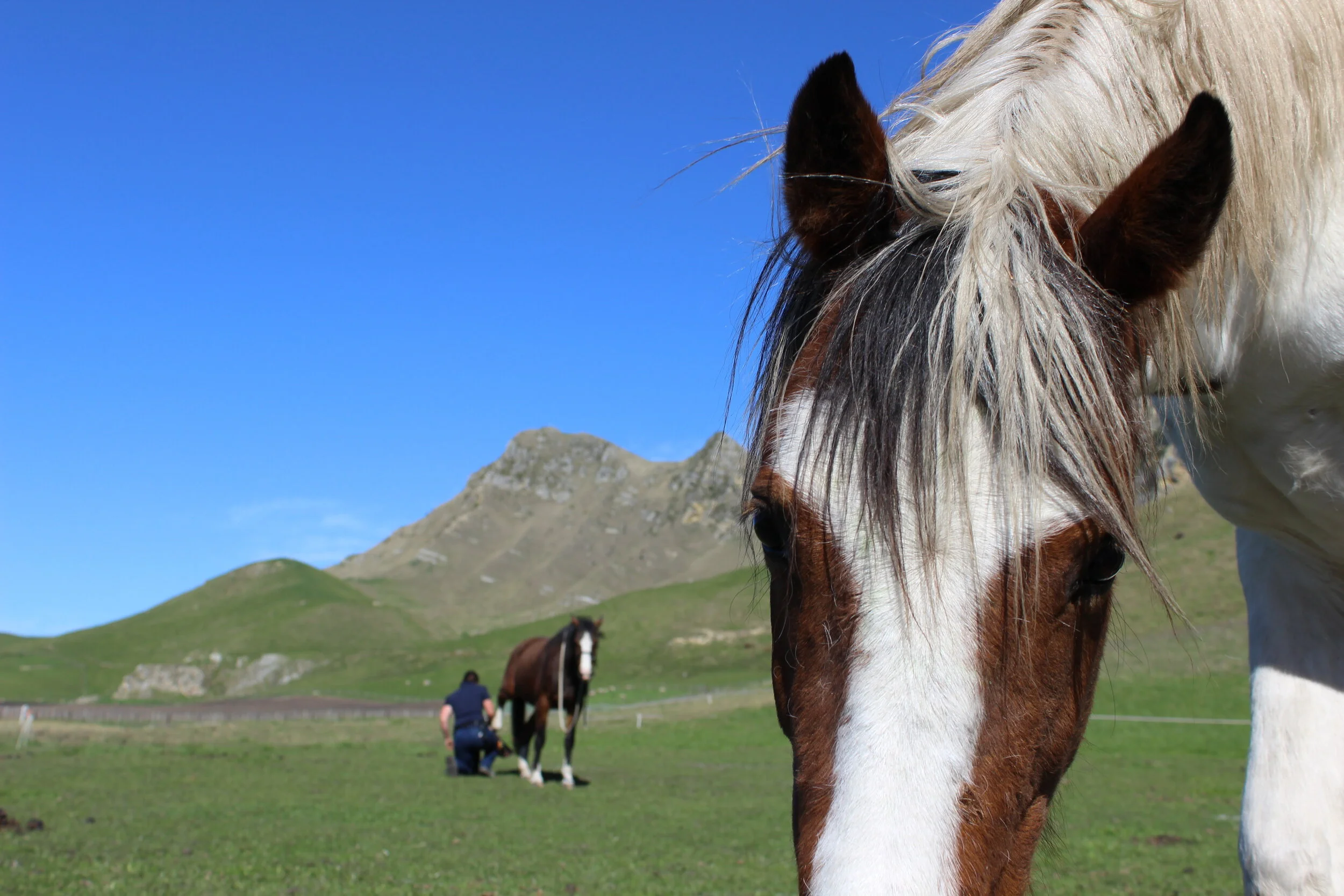Act quickly if you suspect your horse may have laminitis - it can make all the difference to the outcome. Don’t hesitate! If it’s not laminitis no harm done.
Laminitis is one of the most catastrophic things that can happen to our horses. Not only is it extremely painful, it also causes long term damage and makes your horse more prone to future lamintic problems. Acute laminitis is sudden onset of extreme pain and inflammation in the hooves.
Do not walk your horse! The more your horse moves the more damage they do to their very vulnerable hooves!
Step One: Call both your vet and your hoof care provider immediately.
Your vet will need to come out to make a diagnosis and confirm that your horse has laminitis.
Bloods should be taken to try and determine the cause of the laminitic event (do not just assume it was grass, even in the case of “the usual suspect” type).
Your hoof care provider should attend your horse as soon as possible. The horse should be suitably trimmed to relieve the hoof wall (laminitic horses should not be shod) and padded hoof boots fitted to give some comfort.
Step Two: Make your horse comfortable.
Move your horse to a confined area. This is the only time you should ask you horse to move. If possible, use a trailer to move your horse.
Provide a comfortable surface, soft bedding for your horse to stand in and lie on.
Reduce stress by bringing in another horse to keep them company.
Some pain relief may be given. However, your horse needs to feel how bad his feet are so that he won’t move around too much and cause more damage. If it has to be used, Bute should not be given for more than three days.
Emergency hoof boots can be made from thick foam padding and duct tape.
Step Three: Emergency Diet
Remove your horse from grass, no matter the cause of the laminitis, we want to lower sugar levels.
Provide low-sugar hay 24-7, do not leave your horse without something to graze on.
If you don’t have low sugar hay, or you aren’t sure, soak your hay. Hay needs to be soaked for at least 4 hours, so overnight is best. Put the hay in a slow feeder net, submerge and leave overnight, rinse the hay until water runs clear. Use fresh water each time.
Pain relief may be given, but Bute should be avoided if possible and only given for maximum 3 days if it is used. Herbal pain relief is best for laminitics and can be used long term.
Do not feed pre-formulated hardfeeds for laminitics. Many are actually unsuitable for laminitic horses and can make the situation worse.
A plain hard feed can be fed morning and night. See below for what it needs to contain.
Hard feed for Acute LaminitisFeed
Plain Chaff such as meadow, timothy, or oaten. If oaten chaff is used, the oats need to be removed, this can be done by soaking - the oats float to the top and can be taken off.
BetaBeet, soaked and then rinsed. Soak the beetpulp and then put into a sieve and rinse until water runs clear.
This is simply a “vehicle” to give the horse other supplements, but the chaff and betabeet is good for your horse’s gut. The total feed size should be no more than the volume of a 3lt container for a standard size horse of 15hh.
Supplements
Mineral supplement. I recommend Balanced Equine Nutrition “Laminitic Rescue” mix. I carry a supply of this mineral mix with me.
Salt. A standard sized horse of about 15hh should get 1 tablespoon of salt per day. Plain table salt is fine, avoid pink salt, it contains iron.
Magnesium. Magnesium Chloride is easily absorbed and affordable. I carry a small supply, or it can be purchased at most farm stores.
Pain Relief
Pain relief is best given in the form of herbal supplements which are easy on the gut and can be given long term. Bute, if given should only be used for a maximum of 3 days, it is hard on the gut and can, in some cases, make laminitis worse.
I carry The Equine Herb Company’s Laminitis Support Blend with me. This contains Hawthorne, Nettle, Rosehips, Burdock, Dandelion, Cleavers and White Willow.
Devils Claw can be added for pain relief, but should not be used if you suspect your horse could have gastric ulcers.
This herb blend can be made into a tea, steep the the recommended dose in 2-3 cups boiling water, allow to cool and then mix the tea, leaves and all into the feed.
